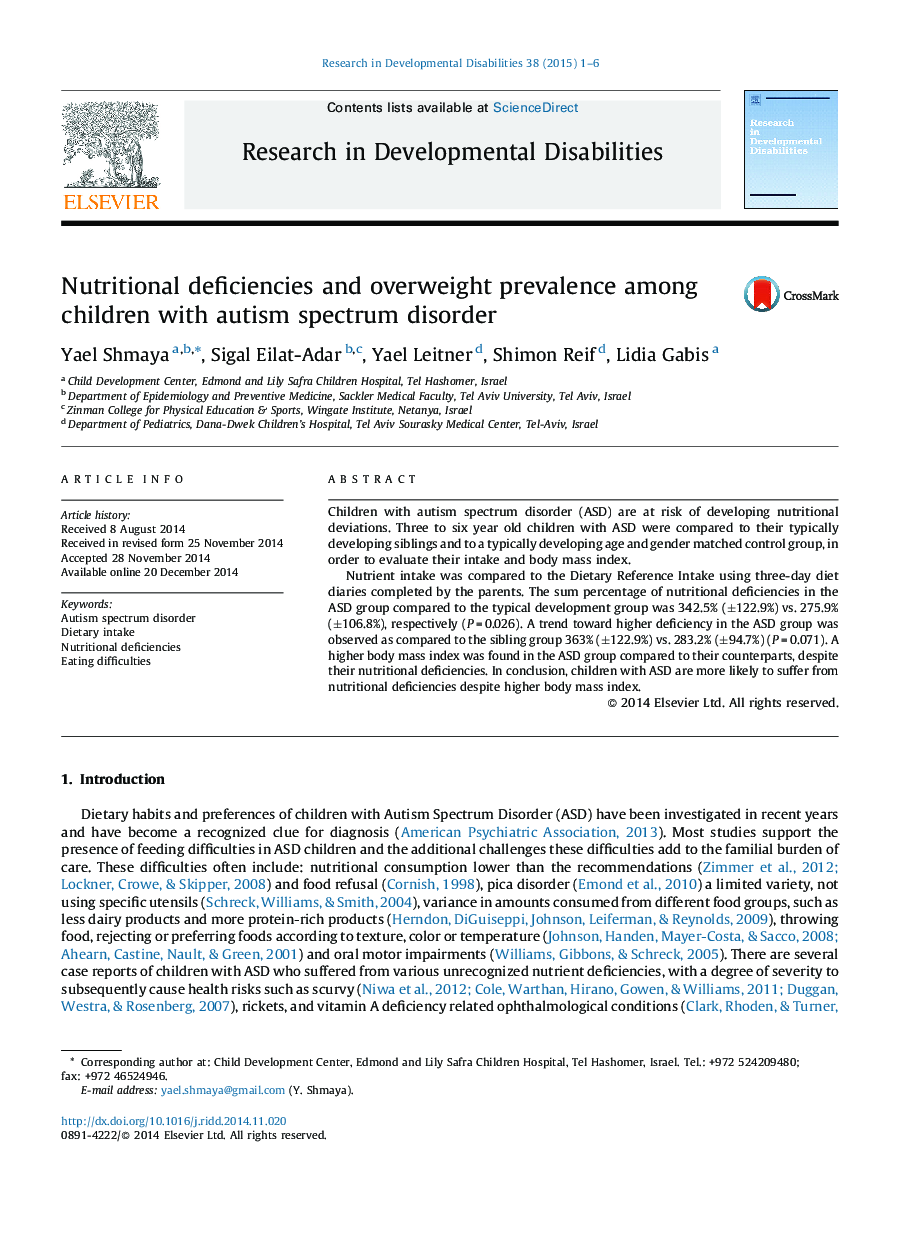| Article ID | Journal | Published Year | Pages | File Type |
|---|---|---|---|---|
| 371205 | Research in Developmental Disabilities | 2015 | 6 Pages |
•Children with ASD present feeding difficulties which affect nutritional status and growth indices.•Average intake, in this population, does not consistently reflect the nutritional risk.•The use of calculated sum of nutritional deficiencies reveals the nutritional risk.•ASD is a risk factor for overweight in children.•Total nutrition and its components should be thoroughly evaluated in ASD children.
Children with autism spectrum disorder (ASD) are at risk of developing nutritional deviations. Three to six year old children with ASD were compared to their typically developing siblings and to a typically developing age and gender matched control group, in order to evaluate their intake and body mass index.Nutrient intake was compared to the Dietary Reference Intake using three-day diet diaries completed by the parents. The sum percentage of nutritional deficiencies in the ASD group compared to the typical development group was 342.5% (±122.9%) vs. 275.9% (±106.8%), respectively (P = 0.026). A trend toward higher deficiency in the ASD group was observed as compared to the sibling group 363% (±122.9%) vs. 283.2% (±94.7%) (P = 0.071). A higher body mass index was found in the ASD group compared to their counterparts, despite their nutritional deficiencies. In conclusion, children with ASD are more likely to suffer from nutritional deficiencies despite higher body mass index.
